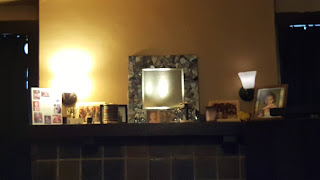Color is my day - long obsession, joy, and torment.
- Claude Monet
I've been thinking about color this morning. I love color. Do you? I have this quote on a magnet on my storage bins at work where I (used to) see it every day. Of course in an appropriately colorful and fanciful font. I have been spurred on in thinking about color because I'm reading the "Color" issue of PLY Magazine (Issue #2).
There is lots to say about color, but I'm going to focus in on one thing. I feel like a lot of people are unsure or tentative with color. They feel like it's "hard". Wellll, like most things in life it can be, but it doesn't need to be. If you're not making your living as a colorist, if you're just looking to come up with a good colorway for your next Fairisle sweater, then do you really need an art degree to pick colors? I'm going to say no. I'm going to say right here that I've read as much as I can find about color and color theory, but I have no art degree, or any training in art at all. (I have been told by more than one professional artist that I have a "good eye", though.) Anyway, if you can match your clothes you have the skills you need to choose colors. I've said this before, and I'll give an example here. If you don't understand color theory, and don't necessarily want to, you can still be successful working with color. Copy someone else (who presumably does have an art degree and has studied color theory extensively). Let's look at this painting:

A Sunday Afternoon on the Island of La Grande Jatte by Georges Seurat
It's one of my favorites. I really love Seurat and the whole concept of pointillism, but we're not going to talk about that (although the whole color mixing thing is another great color theory concept). No, we're going to talk about the colors you see in the painting. First, notice that ~2/3 of the painting is in the "sunlight". It's lighter than the other third, which we read as "shadow". This is a good ratio. You can go either way -- 2/3 light and 1/3 dark (like here) or 2/3 dark and 1/3 light. A good example of this is the painting Christ in the Storm on the Lake in Galilee by Rembrandt. Ok, moving on. Let's talk about the colors. Seurat is painting a realistic scene, so the trees are green, the grass is green, and the river is blue, so we recognize them. But was the grass really those particular shades of green? Was the river that particular shade of blue? He had some leeway in choosing colors so he chose the ones that made the picture more pleasing, visually. Most of the grass is actually yellow-green, and the water is a blue-green. They're part of what in color theory is called a quadratic color scheme, because look at the clothing the picnickers are wearing. Lots of reds to red orange (the complements to green and blue green). Do you think that many people where wearing red on that day? I doubt it; it was the artist controlling what he could control. Another color that shows up is blue violet. In fact all of the clothing anyone is wearing in the painting is either red to red orange or blue violet. (With the notable exception of the white dress on the girl in the center, but that's just to draw your eye).
Anyway, you don't need to know that! All you have to do, if you love these colors is duplicate them.
1 2 3 4
You can throw in white if you want, but you don't have to. So...say you're knitting a Fairisle yoke sweater. The recipient is a red head (like my friend Michelle, my beloved Gracie, or my Older Son) who looks great in green. So the body of your sweater will be the green, and you will use the other colors as your accent colors in the yoke. Or say you're a brown haired, brown eyed beauty like myself and blues/purples are your thing. Well, I'd go with the dark blue violet (#3) for the body and use the other colors for my accent colors. The combination will be successful and you know it will be successful because you can see it in the painting. Want to add more colors? There's white, also the darker green (5) and pale pink (6). Those seven (I can't show you white here, but it's the background) should give you all the colors you need for the most complex of color palettes. Let me put them all together here:
1 2 3 4 5 6
Let's group them light to dark:
6 4 1 2 5 3
You can use them in whatever ratio you want, but most pleasing (as I said) will be ~2/3 to ~1/3. Mostly dark? Use more 2 5 3. Mostly light? Use more 6 4 1.
Not thrilled with these colors? That's ok. Pick another painting or photo that you really love. Or better yet, check out Pantone. There is a whole crew of professional color people choosing what goes together there. And you're guaranteed a top "fashion" color. (As an aside, I was visiting my sister and was explaining to her in 2013 what the color for Fall was [Moroccan Blue] and when we were at MDS&W she took great delight in pointing out all the dyers with that color included in their mixes.)


















































